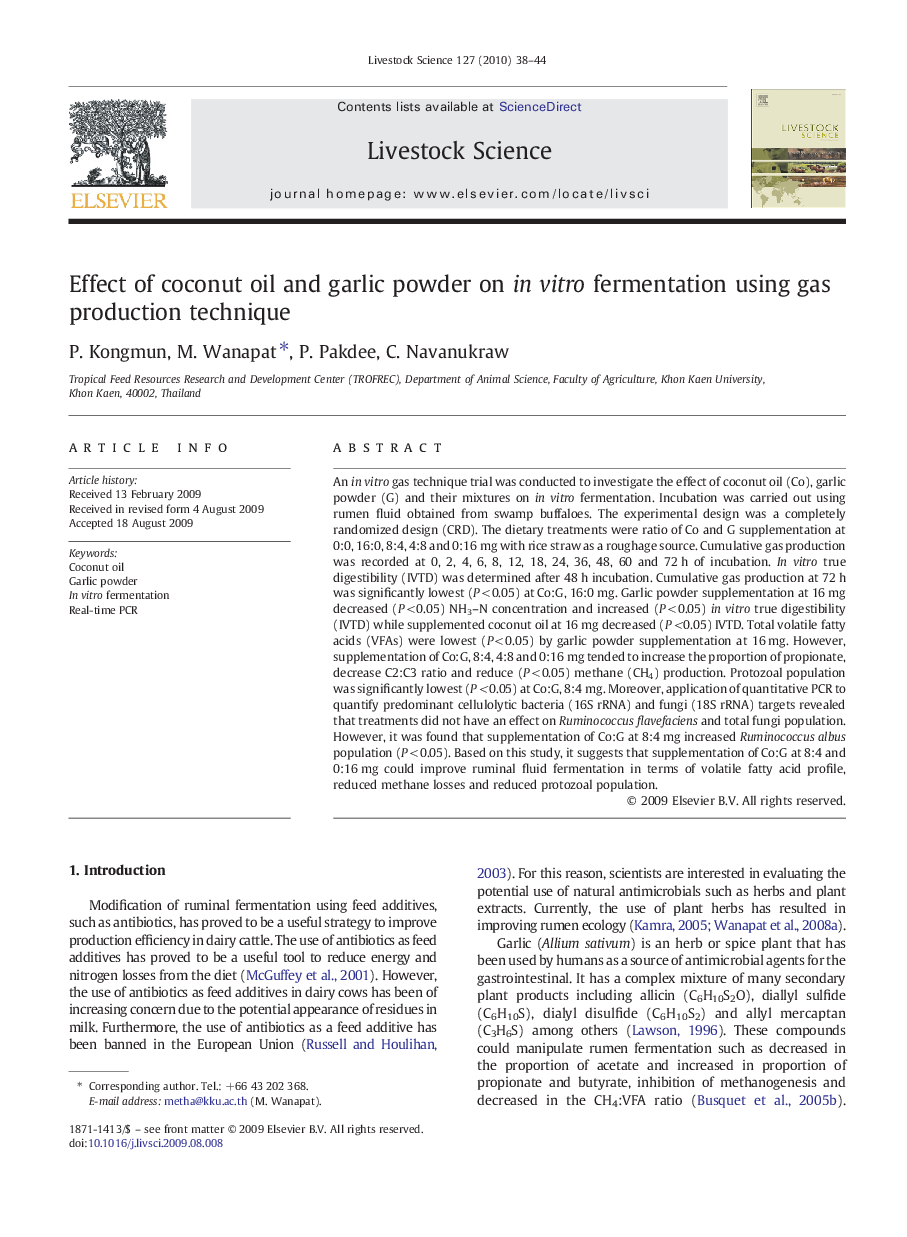| Article ID | Journal | Published Year | Pages | File Type |
|---|---|---|---|---|
| 2448206 | Livestock Science | 2010 | 7 Pages |
An in vitro gas technique trial was conducted to investigate the effect of coconut oil (Co), garlic powder (G) and their mixtures on in vitro fermentation. Incubation was carried out using rumen fluid obtained from swamp buffaloes. The experimental design was a completely randomized design (CRD). The dietary treatments were ratio of Co and G supplementation at 0:0, 16:0, 8:4, 4:8 and 0:16 mg with rice straw as a roughage source. Cumulative gas production was recorded at 0, 2, 4, 6, 8, 12, 18, 24, 36, 48, 60 and 72 h of incubation. In vitro true digestibility (IVTD) was determined after 48 h incubation. Cumulative gas production at 72 h was significantly lowest (P < 0.05) at Co:G, 16:0 mg. Garlic powder supplementation at 16 mg decreased (P < 0.05) NH3–N concentration and increased (P < 0.05) in vitro true digestibility (IVTD) while supplemented coconut oil at 16 mg decreased (P < 0.05) IVTD. Total volatile fatty acids (VFAs) were lowest (P < 0.05) by garlic powder supplementation at 16 mg. However, supplementation of Co:G, 8:4, 4:8 and 0:16 mg tended to increase the proportion of propionate, decrease C2:C3 ratio and reduce (P < 0.05) methane (CH4) production. Protozoal population was significantly lowest (P < 0.05) at Co:G, 8:4 mg. Moreover, application of quantitative PCR to quantify predominant cellulolytic bacteria (16S rRNA) and fungi (18S rRNA) targets revealed that treatments did not have an effect on Ruminococcusflavefaciens and total fungi population. However, it was found that supplementation of Co:G at 8:4 mg increased Ruminococcusalbus population (P < 0.05). Based on this study, it suggests that supplementation of Co:G at 8:4 and 0:16 mg could improve ruminal fluid fermentation in terms of volatile fatty acid profile, reduced methane losses and reduced protozoal population.
